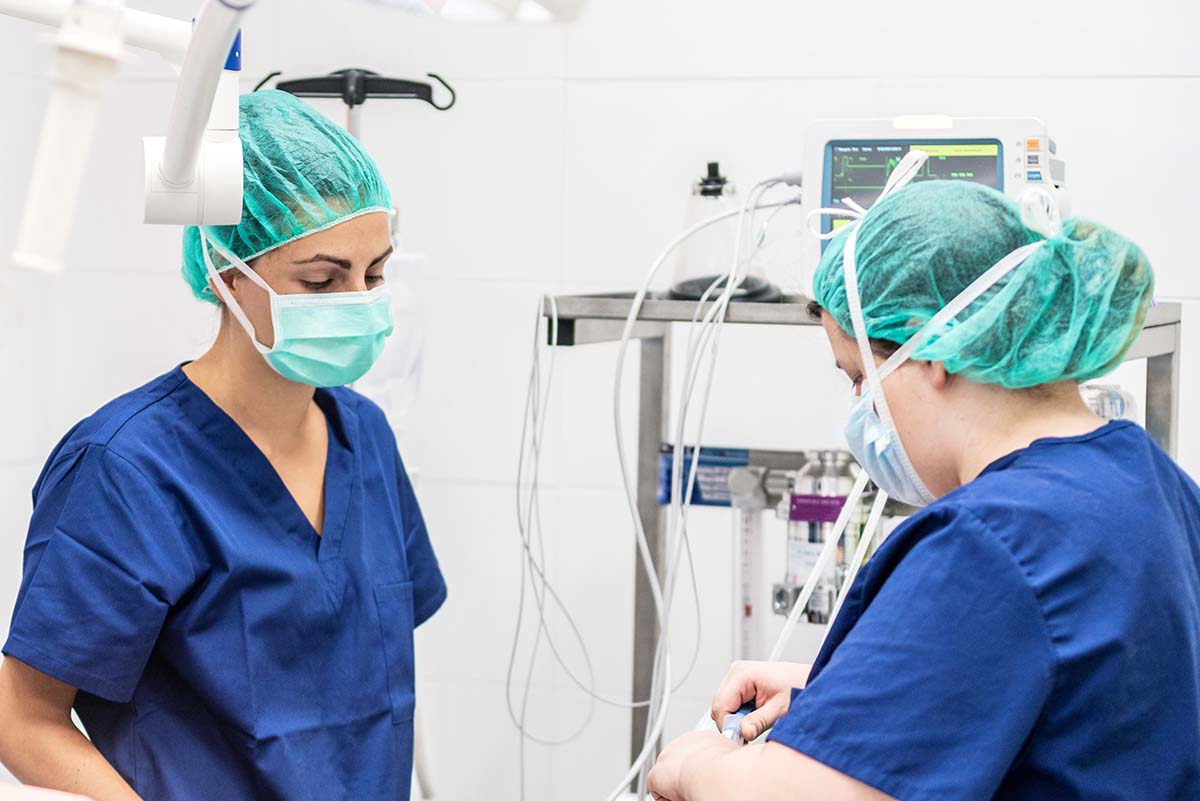Press Release
Johns Hopkins APL Partners with CDC to Protect Frontline Health Care Workers
According to a Kaiser Health News report, more than 3,000 doctors, nurses and other health care professionals have died of SARS-CoV-2 since the virus arrived in the United States a little more than a year ago.
In addition to COVID-19, there are countless routine pathogens that health care personnel encounter daily, highlighting the need to develop a better understanding of how viruses and other pathogens are transmitted, risks to health care workers and patients, and effective mitigation strategies.
The Johns Hopkins Applied Physics Laboratory (APL) in Laurel, Maryland, in collaboration with the Johns Hopkins Armstrong Institute for Patient Safety and Quality in Baltimore, is initiating a study sponsored by the Centers for Disease Control and Prevention (CDC) to conduct an extensive characterization and analysis of aerosol generation in health care settings with the goal of reducing the exposure of frontline health care workers and patients to potentially infectious aerosols.
The two-year APL effort is part of Project Firstline, a CDC initiative aimed at training and empowering every member of the U.S. health care workforce with the infection control knowledge to implement actions that protect themselves, their facility and their community. While clearly valuable for the current COVID-19 response, Project Firstline addresses the ongoing need for infection control training, education and innovation for the wide array of routine infectious risks encountered every day in health care settings.
APL will leverage its extensive capabilities in aerosol science, biology and miniature sensors on one of the most crucial tasks in this effort: characterizing air and aerosol movement in clinical environments.
Air and aerosol movement have been documented as contributors to health care-associated infections, including those related to surgical procedures in operating rooms. However, there hasn’t been a detailed study of how and where air and aerosols move in surgical settings. Not enough is known about the degree to which variables such as the presence and number of people, location and use of doorways, air-handling infrastructure, and types and locations of equipment can influence air movement and the risk of exposure to patients and frontline health care workers.
“We will apply a combination of advanced sensing approaches — airspeed anemometers, aerosol detectors, video and motion capture recordings, light detection and ranging, temperature sensors, etc. — to better understand the built environment and human factors that influence air movement,” said Brian Damit, project manager and a research scientist in APL’s National Health Mission Area. “This data will ultimately help us develop actionable solutions for health care providers to minimize the negative effects of air movement for patients and health care personnel.”
Another important challenge of the effort will be to assess the risks associated with possible aerosol-generating procedures (AGPs) — clinical procedures such as intubation, suctioning and bag-valve mask resuscitation. In the absence of systematic measurement and assessment of aerosol production, it is unclear which procedures require additional precautions, such as special environmental controls and personal protective equipment.
“Our team will not only experimentally characterize the activities most commonly identified as AGPs, but we will also assess other clinical procedures not traditionally thought of as posing an aerosol risk,” Damit explained. “The idea is to understand when, to what extent, and where aerosols are produced by these activities, the aerodynamic nature of the aerosols, and whether they are made up of respiratory secretions versus medications or other nonbiological material.”
Managing and maintaining the health care environment and the medical devices used are crucial components of effective infection control.
APL will work with the Johns Hopkins Armstrong Institute to examine the operating room environment, individual and team behaviors, and workflows. The team will also zero in on common patient care devices that are potential contributors to cross transmission from patient to patient, identify likely failure points and determine how those failures can be systematically mitigated through technological solutions, adjustments in workflow and/or staff training.
Along with health care professionals at Johns Hopkins Medicine, the team includes a multidisciplinary cadre of experts from APL that includes environmental scientists, infectious disease epidemiologists, computational physicists, health systems engineers, mechanical engineers, aerosol scientists, molecular biologists and geneticists.
“Although we’re early on in the project, we are excited and honored to have the opportunity to help our nation’s frontline health care workers — individuals who have cared for so many during these challenging times,” said Damit.
